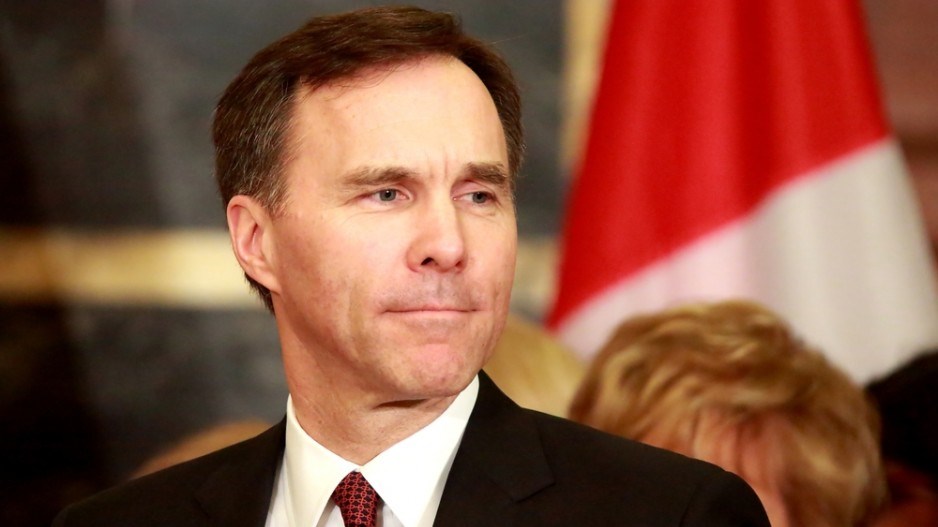Canadian Finance Minister Bill Morneau handed down a budget Wednesday, March 22 that includes a new $11.2 billion national housing strategy, $7 billion for child care, a $28.5 billion deficit and no plan to end deficit spending for the foreseeable future. It also includes $3.5 billion in spending for infrastructure, health and education in First Nation communities.
Budget 2017 is more policy-oriented tinkering than spending-oriented, as the Liberal government’s major spending plans – including $120 billion in infrastructure over 10 years – were largely laid out in the 2016 budget.
“Given the expectations and some of the buildup in advance of this budget, it turns out it’s largely a kind of a status quo document and I think that reflects the unsettled environment we’re in," said Jock Finlayson, executive vice-president and chief policy officer for the Business Council of BC.
He said it might be rash for the Canadian government to consider any major changes to taxation policies when it’s not yet known what kind of shakeup might come south of the border with respect to tax policies there.
“In terms of any further tax changes, that’s really been punted out into the future, and wisely so,” said Finlayson. “Given developments in the United States, it would be premature for the government of Canada to be overhauling in any meaningful way tax policy in Canada until we have a better idea of what the U.S. is going to be doing.”
While there is little that is new in Budget 2017, it does put some details to the big-picture spending plans announced in 2016, which included a new infrastructure bank, with Ottawa planning to use $35 billion in public funding to leverage billions more in private investment.
The budget includes no new real sources of tax revenue, but provides $523.9 million to help the government crack down on tax cheats and some closing of loopholes. There will also be the scrapping of the 15% public transit tax credit and the decades-old Canada Savings Bond.
There are no changes to corporate income tax rates. It also includes eliminating tax loopholes for wealthier Canadians, applying the GST to ride sharing services like Uber and an increase to alcohol taxes.
The budget also includes $4.5 billion in new military spending. The deficit, projected at $29.4 billion in the 2016 budget, actually came in at $23 billion and is now projected in 2017 to be $28.5 billion.
Other highlights in the 2017 budget include: • $2.2 billion to support clean technology development;
• $950 million over five years to create business “superclusters”; • $400 million over three years to help new startups with a new Venture Capital Cataltyst Initiative program;
• $395.5 million over three years to expand youth employment programs; and
• $27.5 million to help skilled immigrants get Canadian credentials.
Budget 2016 initiated five years of projected deficit spending, with $50 billion in new spending, and five years of deficits, starting with a $29 billion deficit projected for 2016.
"We are concerned that the government has no plan to return to a balanced operating budget, even with the assumption of steady economic growth through 2022," Finlayson said.
"This raises the prospect that a future economic downturn could lead to a sharp escalation of the deficit, putting at risk Canada's triple-A credit rating."
Much of the infrastructure spending announced in 2016 doesn’t actually start flowing until after the next federal election in 2019.




